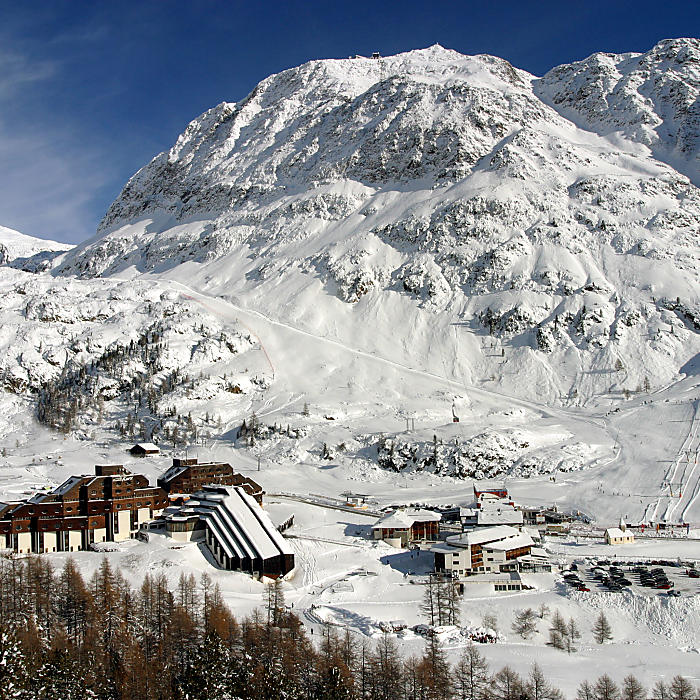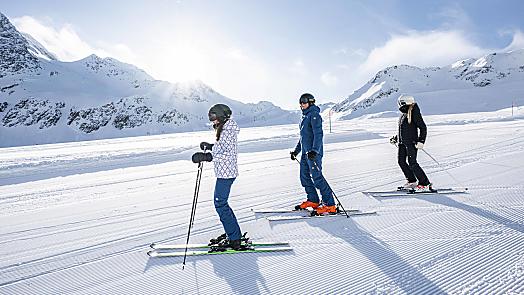Mobility in the mountains
From Ötzi’s journey across the Val Senales glacier to the construction of paved roads reaching nearly every village, and now to sustainable tourism in Italy – mobility in the region has undergone tremendous change. The mountains have always been both a challenge and a driver of innovation.
How to get to South Tyrol
As early as the Bronze Age, the Alps – a natural border between Central and Southern Europe – were crossed by traders, hunters, and explorers. The Romans built the first mountain pass roads, and in the Middle Ages pilgrim and trade routes were heavily travelled, usually on horseback or on foot. Modern carriage-ready roads and railway tunnels as new ways of how to get to South Tyrol were only built in the 19th century, when tourism – at first on a very small scale – began to reach the region. Today, virtually all settlements are connected by paved roads and accessible not only by car but also by bus. The major valleys of South Tyrol are served by rail (Val Venosta – Merano – Bolzano – Bassa Atesina, Bolzano – Brennero, and Val Pusteria), and Bolzano also has had a commercial airport for several years now. In line with the desire to be a sustainable tourism destination, the bus fleet is increasingly being electrified.
Over hill and dale
In earlier times, the rural population of South Tyrol mostly moved only between their village, fields, and mountain pastures. Pack animals were used for transporting goods, while in winter sleds and toboggans came into play. Snowshoes made of wooden frames and leather straps were also known, enabling movement even in deep snow. The high alpine terrain – areas unsuitable for agriculture – simply held no interest then. This is reflected in the fact that most mountain peaks were named much later than villages, rivers, or farmland, and also in the relatively recent first ascents of the major summits.
One important exception is the transhumance of sheep in Val Senales: at least since the 14th century, shepherds have crossed the glacier with their flocks to pasture them in the Ötztal Alps during the summer. The return of the sheep each September is celebrated with a large festival in Maso Corto and Vernago.
The tourism revolution
The first tourists in the Alps were mostly wealthy summer guests, drawn by the tranquility and fresh mountain air. Only later, at the beginning of the 20th century, did the mountains begin to be developed for hikers and skiers. Old trails were expanded into hiking paths, mountain huts were built, and the first hiking maps were printed. The first ski lifts appeared in the interwar years, but the real boom came only after 1945.
Since then, ski and hiking areas have been established in almost every valley of South Tyrol, attracting ever more guests with an increasingly diverse offering. Hiking trails became forest roads, ski slopes grew in number and width, lift systems became more modern, and mountain huts turned into places not just to eat but also to party. Major international ski races put South Tyrol on the world stage. Thanks to modern snowmaking systems, introduced in the 1980s and 1990s, skiing can be guaranteed throughout the season.
Sustainable tourism in Italy
Since the early 2000s, awareness has grown that unlimited growth in tourism is neither feasible – due to limited resources – nor desirable, as it risks destroying precisely what makes South Tyrol so attractive to visitors. The ongoing transformation towards a sustainable tourism destination is therefore about ensuring that future generations can also enjoy this extraordinary landscape.
An increasing number of ski and hiking areas, as well as hotels and restaurants, are raising their sustainability standards. In gastronomy, regional products and organic farming are moving into the spotlight. With the introduction of the South Tyrol Guest Pass, distributed also by accommodation providers in Val Senales, guests today can use the entire public transport network in South Tyrol free of charge, making a valuable contribution to our sustainable tourism destination.
The relatively small and tranquil Val Senales was a latecomer to tourism: the first glacier cable car was opened in the summer of 1975 – and completely renovated in 2023. As a result, our valley has preserved its original and authentic character. Here you can still find unspoiled nature, restorative silence, endless horizons, and heartfelt hospitality. That is why we are one of the most popular destinations for sustainable tourism in Italy. And if you’re wondering how to get to South Tyrol, you can already opt for eco-friendly travel alternatives for your journey.
What are you waiting for? Find your perfect accommodation today!





![[Translate to Englisch:]](/images/content/448734_mobile_0_0_0_0/524cX295c/fileadmin/user_upload/MGP_schnalstal-3_11zon.jpg)